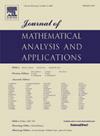正线性算子复合的核
IF 1.2
3区 数学
Q1 MATHEMATICS
Journal of Mathematical Analysis and Applications
Pub Date : 2025-09-08
DOI:10.1016/j.jmaa.2025.130052
引用次数: 0
摘要
本文研究了Bernstein-Durrmeyer算子和Szász-Mirakjan-Durrmeyer算子的组合,重点讨论了相关核函数的结构和性质。在Bernstein-Durrmeyer算子的情况下,我们建立了由两个和三个算子复合产生的核的新恒等式。就像众所周知的关于勒让德多项式的表示一样,它们自然地展示了这些算子的交换性。当这个Legendre表示包含Bernstein基多项式的所有可能乘积pk,i(x)pk,j(y),0≤i,j≤k≤n时,新的表示有一个美丽的性质,它只包含乘积pk, r (x)pk, r (y),0≤r≤k≤n,其中n是所涉及的Bernstein - durrmeyer多项式的最小次。这一事实立即意味着组合可以写成运算符本身的线性组合。基于Bernstein-Durrmeyer算子Mn的特征结构,我们得到了它的第r次迭代的表示为算子Mk的线性组合,对于k=0,1,…,n。我们还讨论了Szász-Mirakjan-Durrmeyer运算符的组成,并重新讨论了给出初等证明的已知结果。本文章由计算机程序翻译,如有差异,请以英文原文为准。
Kernels for composition of positive linear operators
This paper investigates the composition of Bernstein–Durrmeyer operators and Szász–Mirakjan–Durrmeyer operators, focusing on the structure and properties of the associated kernel functions. In the case of the Bernstein–Durrmeyer operators, we establish new identities for the kernel arising from the composition of two and three operators. Like the well-known representation in terms of Legendre polynomials, they show the commutativity of these operators naturally. While this Legendre representation contains all possible products , of Bernstein basis polynomials, the new representation has the beautiful property to contain only products , where n is the smallest degree of the Bernstein–Durrmeyer polynomials involved. This fact immediately implies that the composition can be written as a linear combination of the operators themselves. Building on the eigenstructure of the Bernstein–Durrmeyer operator , we obtain a representation of its r-th iterate as a linear combination of the operators , for . We also address the composition of Szász–Mirakjan–Durrmeyer operators and revisit a known result giving an elementary proof.
求助全文
通过发布文献求助,成功后即可免费获取论文全文。
去求助
来源期刊
CiteScore
2.50
自引率
7.70%
发文量
790
审稿时长
6 months
期刊介绍:
The Journal of Mathematical Analysis and Applications presents papers that treat mathematical analysis and its numerous applications. The journal emphasizes articles devoted to the mathematical treatment of questions arising in physics, chemistry, biology, and engineering, particularly those that stress analytical aspects and novel problems and their solutions.
Papers are sought which employ one or more of the following areas of classical analysis:
• Analytic number theory
• Functional analysis and operator theory
• Real and harmonic analysis
• Complex analysis
• Numerical analysis
• Applied mathematics
• Partial differential equations
• Dynamical systems
• Control and Optimization
• Probability
• Mathematical biology
• Combinatorics
• Mathematical physics.

 求助内容:
求助内容: 应助结果提醒方式:
应助结果提醒方式:


